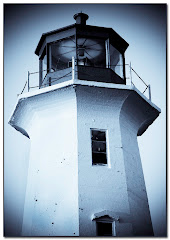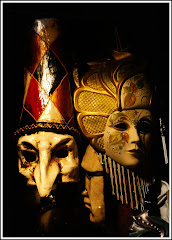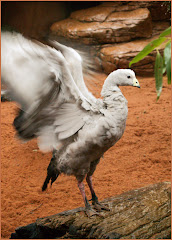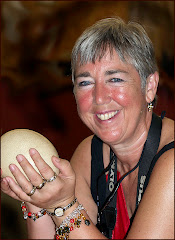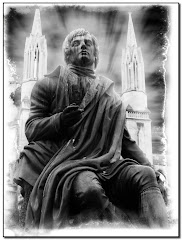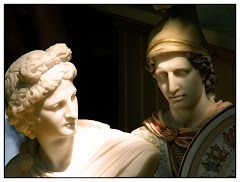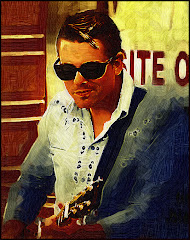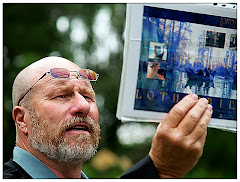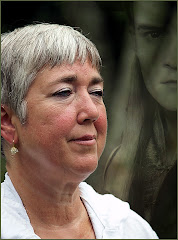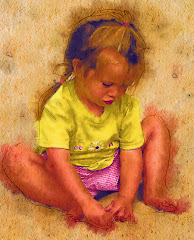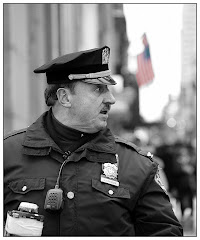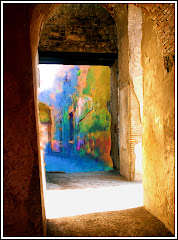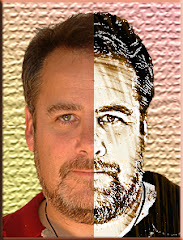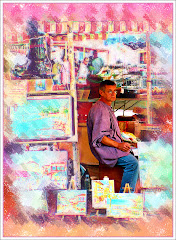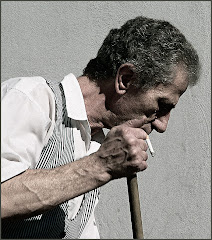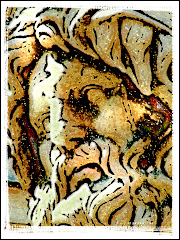What's the deal with portraits...and why are so many of them boring?
Most of us have seen those corporate portraits: the confident man sitting with a half smile on his face and a "your money will be in good hands with ME" look in his face.
That's not a portait. It's a sales tool -- and it's very successful on that level. It's a picture designed to inspire confidence in a person.
In short...it's a portait with a PURPOSE. All portraits should have a purpose...a reason to exist. A portait is an artistic impression of what someone (or something) is all about. It's a subjective image where the image-maker says "Here's something I wanted to share with you about a person I met."
Travel portraits, in particular, are tough to do. Your subject isn't in a controlled studio setting and they aren't going to pose for you. You have the time it takes for the shutter to click to complete your basic graphic. It's a split second impression that you, as the artist, have designed to make a point.
It's not a picture of Aunt Sadie smiling into the camera...or Uncle Joe making a show of sticking his finger up his nose. What interesting information do those pictures tell a stranger about Aunt Sadie or Uncle Joe?
We were in New Zealand, my wife and I. And we took a full day to visit Lord of the Rings film sites. The fellow leading the tour is pictured to the right. He was a performer in the film -- and is passionate about his subject matter.
We were impressed with how much he knew about the films, where they were shot and what was going on behind the scene. He'd put a lot of time into planning what to share and how to share it.
Taking a picture of him in a studio setting with his hands folded neatly on his lap would tell you nothing about him, right?
Try to get your travel subjects inside their CONTEXT. By "context" I mean "in a place that says something significant about them" or "as they do something significant."
In this picture, he was reading a passage from Tolkien's book to an enraptured audience. You see intensity on his face -- the focus for my portrait. The page with the passage on the back of it is visible -- but isn't in focus since it's not the main idea of the picture. He is. His passion is. He's a guy in context.
Photoshop makes it easy. I sharpened the focus using the "smart sharpen" filter option in Photoshop CS3, did a minor re-crop and threw a "snapshot" like frame on it.
Here's a guy sharing his passion. See his face? See the way he's holding the graphic? See how he cared enough about the graphic to put it in a page protector? See how he's pushed his glasses up -- like they were in the way. Looking at this portrait...how many things could a stranger tell me about who this man is in his heart of hearts?
Try this exercise with one of your travel portraits. Pretend you know nothing about the subject at all. Try to figure out how the visual details you, as the artist, have put into the photo relate information about your subject.
Here are Five Golden Tips for making good Travel Portraits:
1) SHOOT LOTS OF PICTURES. Who cares if 95% of your shots stink? That one that is perfectly framed and beautifully exposed COMPLETES the task. Delete the bad ones and show off the good one. It's digital. Relax.
2) TRY TO INCORPORATE ACTION. Pictures where someone is doing something are much more interesting than ones where they aren't.
3) DON'T GET YOUR SUBJECT TO POSE. These pictures nearly always suck. It's so much better to catch your subject when they aren't smiling into the camera.
4) TRY TO GET AN INTERESTING BACKDROP. Where is the subject standing? Is it an interesting place? Are there interesting colors? It's all part of context.
5) DON'T BE A PHOTOGRAPHER WEENIE. These are the smug types that sneak up on a subject and "steal" a picture. This isn't cool. Try to stick to photographs (the ones with recognizable faces in them anyway) of people doing something in a public setting: street entertainers and the like. And never EVER photograph a child you don't know. This can (and should) get you beaten up in today's society.
The role of Photoshop broadens the idea of HOW to present a portrait.
We happened across some guys playing great music in a farmer's market in NZ. As opposed to simply showing a snapshot of each guy, I used Photoshop and a third party plug in called Virtual Painter to create graphics that would be more interesting to look at. The harmonica guy was real serious and airy. The bass guy was having a great time and the guitar player really looked like he was living a dream to me. So I chose three different applications.
Is there a better way to share your travels than to share an impression of the people you have met in your travels?
There's a chapter on the thoughts that go into travel portratits in the new "Perfect Portraits" book to be released soon at www.photoshopbasics.com
Monday, January 28, 2008
Subscribe to:
Comments (Atom)



